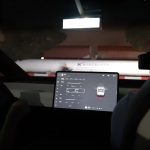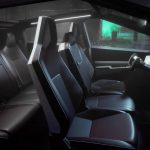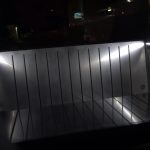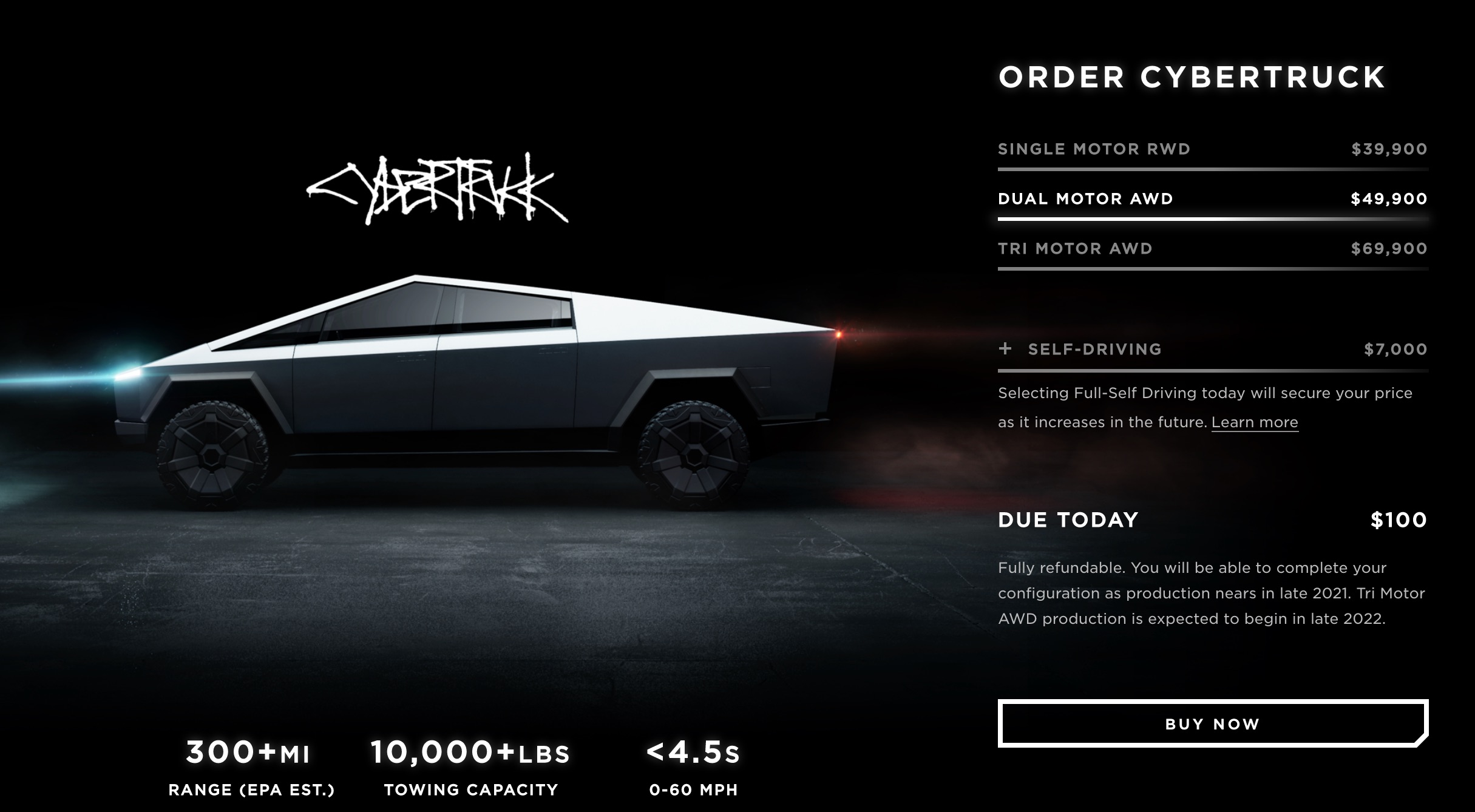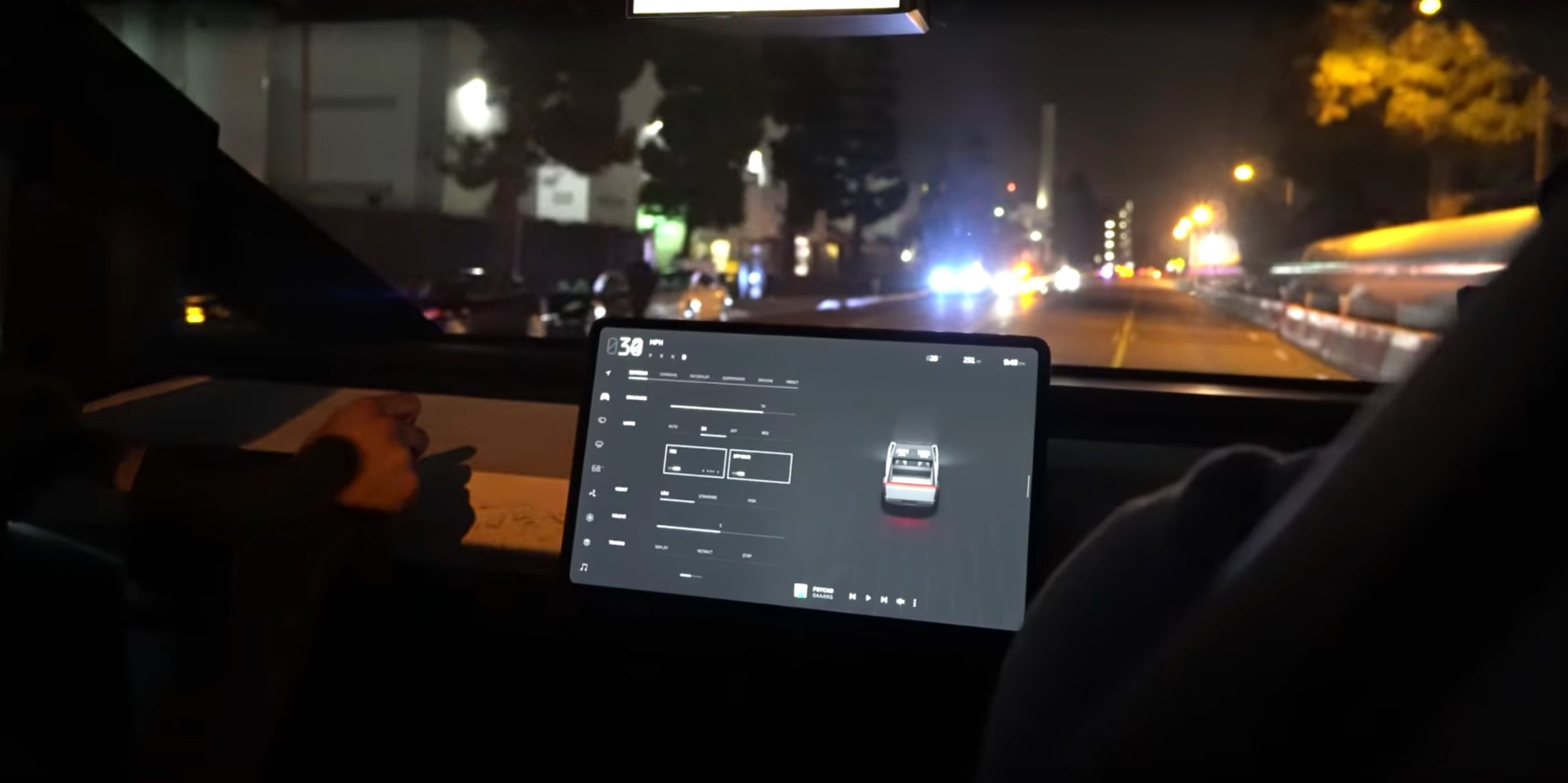
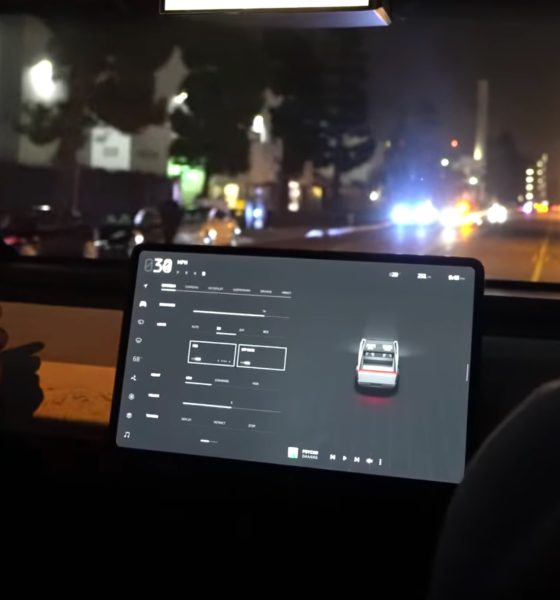
News
Tesla Cybertruck first ride impressions: Musk’s futuristic pickup is everything I thought it wasn’t
Tesla’s new Cybertruck is as much of an all-electric pickup truck for the adventurous early adopter and high-tech consumer, as it is an aristocratic armored battle machine for a dystopian future. At least that was my first impression after taking the first test ride in Elon Musk’s seven-year-in-the-making baby on Thursday night in Los Angeles.
Riding through the backlot of Tesla’s Design Studio and SpaceX headquarters, it didn’t immediately register in my head that this spirited test ride was taking place inside a bulletproof truck that’s the size of a Ford F-150 SuperCab. Spanning 231.7 inches long, 79.9 inches wide, and 75.0 inches tall, Tesla’s Cybertruck isn’t exactly small and certainly won’t be someone’s second Tesla sharing the average home garage. This thing is going on the driveway.
The auto-presenting door handles are reminiscent of the Tesla Model S and run flush against Cybertruck’s DeLorean-style stainless steel body. Not any regular stainless steel. Musk’s brainchild is fortified by ultra-hard 30X Cold-Rolled stainless-steel that Tesla calls the Exoskeleton.
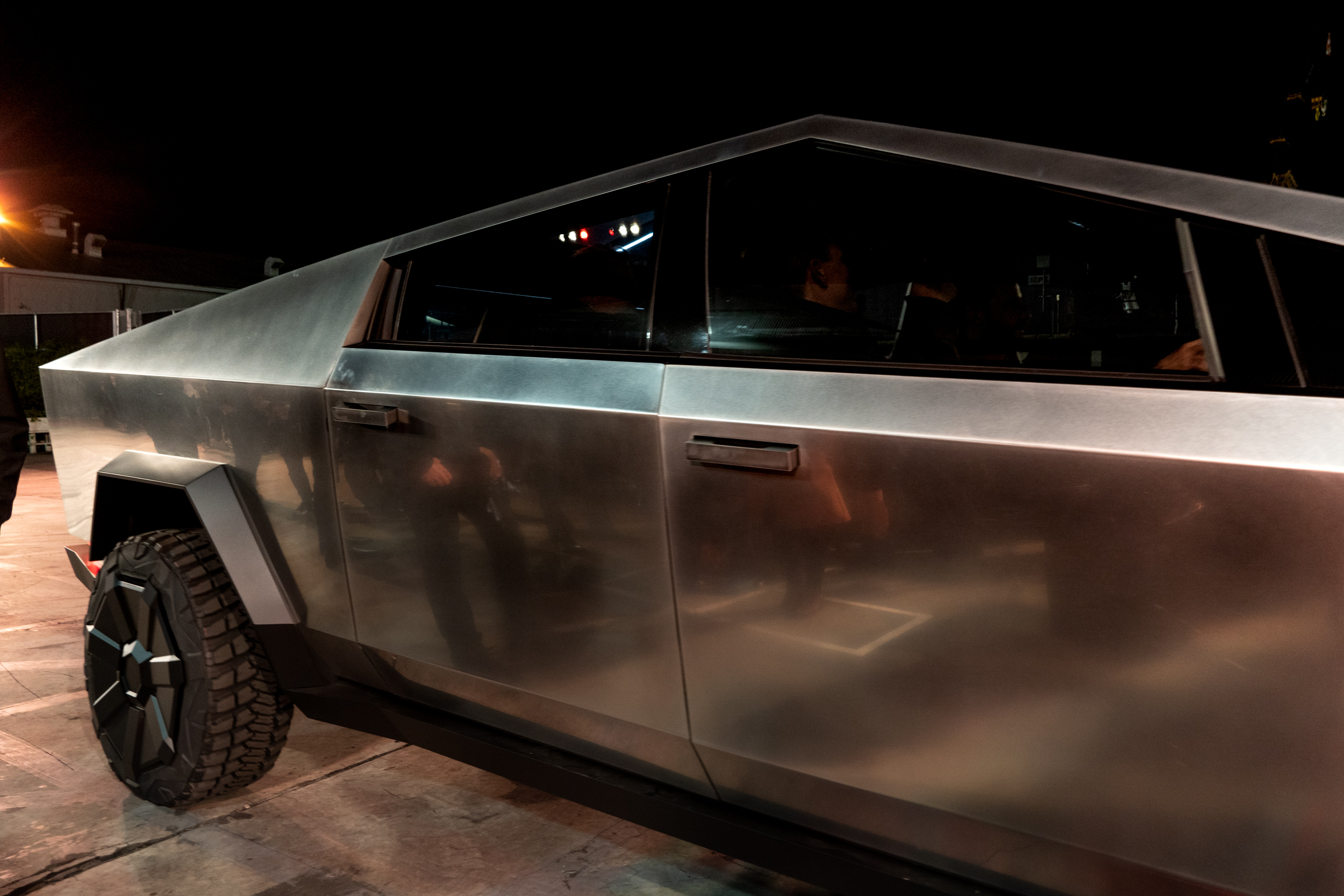
As we climbed into the cyberpunk “Blade Runner” inspired truck, a satisfying thud from closing the door jarred my memory that Tesla’s Chief Designer Franz von Holzhausen just slammed a sledgehammer against them. This thing’s a beast.
And we’re about to take off.
The ever-so familiar feeling of instant acceleration from an all-electric powertrain would follow. We blasted down Jack Northrop road in Tesla’s dual-motor prototype, reaching 60 mph from a gradual 20 mph roll in roughly 4 seconds. Tesla claims a 0-60 mph time of 4.5 seconds for the dual-motor variant, while a tri-motor configuration will be able to eclipse it in 2.9 seconds.
The sounds of Cybertruck’s big, knobby tires clawing at the road are a reminder that no noises go unnoticed in an electric vehicle.
Tesla’s DNA for interior design that’s characterized by extreme minimalism, combined with high-tech features, carried through to its electric Cybertruck. A single 17-inch center-mounted touchscreen acts as the main command center for this heavyweight. Tesla didn’t release details on Cybertruck’s weight, however judging by the similarity in size to a Ford pickup, and taking into account a battery pack that can support up to 500 miles of range, one can presume that Tesla’s “Supertruck” will top the scales at nearly three tons. The rearview “mirror” is actually a digital display that projects video captured from a rear-facing camera. This allows for greater visibility, especially when cargo’s on board such as a Tesla All-terrain Vehicle. Because the truck’s vault can also be covered and used for closed storage, having a camera that streams video to the rearview mirror is of utmost importance.
- (Credit: Tesla)
- Tesla Cybertruck 6.5 ft pickup bed “Vault” (Photo: Teslarati)
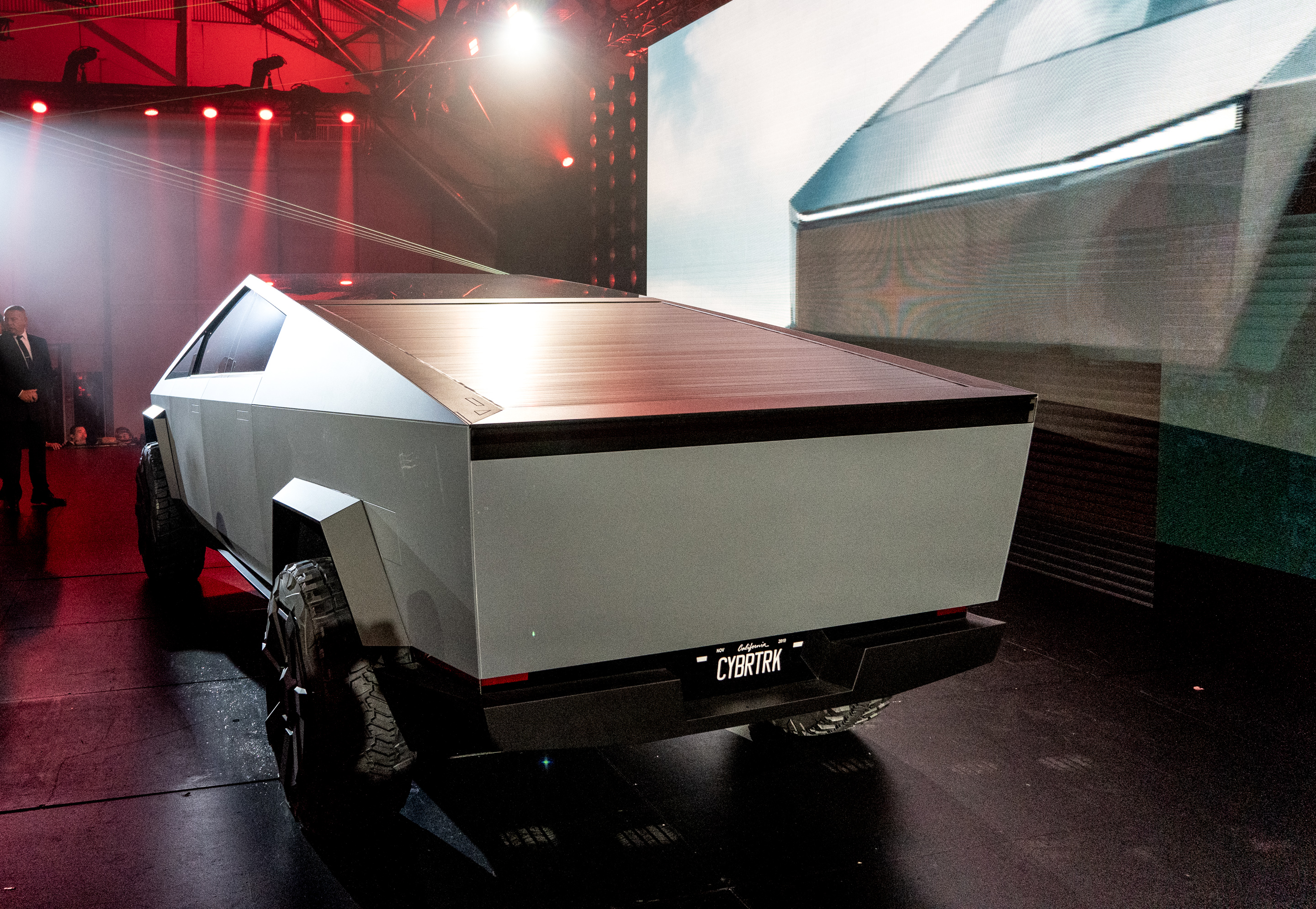
The dashboard and center console were very reminiscent of the Tesla Model 3. The interior was comprised of an airy glass roof, seating for five adults with the option to have a sixth seat in place of the front center armrest, and not much else.
Looking out through the narrow rear window and Cybertruck’s stainless steel finish comes into focus once again. What is traditionally referred to as the pickup bed, Tesla is calling this 6.5 feet long space a vault. A sleek set of lights runs alongside the vault and illuminates any content that’s inside.
With a starting price of $39,900 for the single motor Cybertruck and just under $50,000 for the dual-motor all-wheel drive variant, Tesla’s pickup truck is priced competitively in the top-selling automotive category in the US.
Will Cybertruck appeal to the existing Ford and Dodge pickup truck demographic as we know it? Probably not. But that’s okay. Its polarizing look that elicits feelings of both I love you and I hate you, takes some time to process before becoming a buyer.
Similar to Musk’s mission to showcase an alternative to the traditional minivan with something utterly over-engineered like the Model X, Tesla aims to do what the Falcon-winged SUV did for the soccer Mom, as it looks to do with the DIY-savvy early adopter who also happens to be a bit handy. Make no mistake, Musk’s Blade Runner truck won’t be replacing the Ford F-150 anytime soon.
Also, make no mistake, Tesla Cybertruck is as badass as they come and won’t have much competition when it becomes the official truck of Mars.
I love you. I hate you. I love you again.

News
Tesla (TSLA) receives “Buy” rating and $551 PT from Canaccord Genuity
He also maintained a “Buy” rating for TSLA stock over the company’s improving long-term outlook, which is driven by autonomy and robotics.

Canaccord Genuity analyst George Gianarikas raised his Tesla (NASDAQ:TSLA) price target from $482 to $551. He also maintained a “Buy” rating for TSLA stock over the company’s improving long-term outlook, which is driven by autonomy and robotics.
The analyst’s updated note
Gianarikas lowered his 4Q25 delivery estimates but pointed to several positive factors in the Tesla story. He noted that EV adoption in emerging markets is gaining pace, and progress in FSD and the Robotaxi rollout in 2026 represent major upside drivers. Further progress in the Optimus program next year could also add more momentum for the electric vehicle maker.
“Overall, yes, 4Q25 delivery expectations are being revised lower. However, the reset in the US EV market is laying the groundwork for a more durable and attractive long-term demand environment.
“At the same time, EV penetration in emerging markets is accelerating, reinforcing Tesla’s potential multi‑year growth runway beyond the US. Global progress in FSD and the anticipated rollout of a larger robotaxi fleet in 2026 are increasingly important components of the Tesla equity story and could provide sentiment tailwinds,” the analyst wrote.
Tesla’s busy 2026
The upcoming year would be a busy one for Tesla, considering the company’s plans and targets. The autonomous two-seat Cybercab has been confirmed to start production sometime in Q2 2026, as per Elon Musk during the 2025 Annual Shareholder Meeting.
Apart from this, Tesla is also expected to unveil the next-generation Roadster on April 1, 2026. Tesla is also expected to start high-volume production of the Tesla Semi in Nevada next year.
Apart from vehicle launches, Tesla has expressed its intentions to significantly ramp the rollout of FSD to several regions worldwide, such as Europe. Plans are also underway to launch more Robotaxi networks in several more key areas across the United States.
News
Waymo sues Santa Monica over order to halt overnight charging sessions
In its complaint, Waymo argued that its self-driving cars’ operations do not constitute a public nuisance, and compliance with the city’s order would cause the company irreparable harm.

Waymo has filed a lawsuit against the City of Santa Monica in Los Angeles County Superior Court, seeking to block an order that requires the company to cease overnight charging at two facilities.
In its complaint, Waymo argued that its self-driving cars’ operations do not constitute a public nuisance, and compliance with the city’s order would cause the company irreparable harm.
Nuisance claims
As noted in a report from the Los Angeles Times, Waymo’s two charging sites at Euclid Street and Broadway have operated for about a year, supporting the company’s growing fleet with round-the-clock activity. Unfortunately, this has also resulted in residents in the area reportedly being unable to sleep due to incessant beeping from self-driving taxis that are moving in and out of the charging stations around the clock.
Frustrated residents have protested against the Waymos by blocking the vehicles’ paths, placing cones, and “stacking” cars to create backups. This has also resulted in multiple calls to the police.
Last month, the city issued an order to Waymo and its charging partner, Voltera, to cease overnight operations at the charging locations, stating that the self-driving vehicles’ activities at night were a public nuisance. A December 15 meeting yielded no agreement on mitigations like software rerouting. Waymo proposed changes, but the city reportedly insisted that nothing would satisfy the irate residents.
“We are disappointed that the City has chosen an adversarial path over a collaborative one. The City’s position has been to insist that no actions taken or proposed by Waymo would satisfy the complaining neighbors and therefore must be deemed insufficient,” a Waymo spokesperson stated.
Waymo pushes back
In its legal complaint, Waymo stated that its “activities at the Broadway Facilities do not constitute a public nuisance.” The company also noted that it “faces imminent and irreparable harm to its operations, employees, and customers” from the city’s order. The suit also stated that the city was fully aware that the Voltera charging sites would be operating around the clock to support Waymo’s self-driving taxis.
The company highlighted over one million trips in Santa Monica since launch, with more than 50,000 rides starting or ending there in November alone. Waymo also criticized the city for adopting a contentious strategy against businesses.
“The City of Santa Monica’s recent actions are inconsistent with its stated goal of attracting investment. At a time when the City faces a serious fiscal crisis, officials are choosing to obstruct properly permitted investment rather than fostering a ‘ready for business’ environment,” Waymo stated.
News
Tesla FSD v14.2.2 is getting rave reviews from drivers
So far, early testers have reported buttery-smooth drives with confident performance, even at night or on twisty roads.

Tesla Full Self-Driving (Supervised) v14.2.2 is receiving positive reviews from owners, with several drivers praising the build’s lack of hesitation during lane changes and its smoother decision-making, among others.
The update, which started rolling out on Monday, also adds features like dynamic arrival pin adjustment. So far, early testers have reported buttery-smooth drives with confident performance, even at night or on twisty roads.
Owners highlight major improvements
Longtime Tesla owner and FSD user @BLKMDL3 shared a detailed 10-hour impression of FSD v14.2.2, noting that the system exhibited “zero lane change hesitation” and “extremely refined” lane choices. He praised Mad Max mode’s performance, stellar parking in locations including ticket dispensers, and impressive canyon runs even in dark conditions.
Fellow FSD user Dan Burkland reported an hour of FSD v14.2.2’s nighttime driving with “zero hesitations” and “buttery smooth” confidence reminiscent of Robotaxi rides in areas such as Austin, Texas. Veteran FSD user Whole Mars Catalog also demonstrated voice navigation via Grok, while Tesla owner Devin Olsen completed a nearly two-hour drive with FSD v14.2.2 in heavy traffic and rain with strong performance.
Closer to unsupervised
FSD has been receiving rave reviews, even from Tesla’s competitors. Xpeng CEO He Xiaopeng, for one, offered fresh praise for FSD v14.2 after visiting Silicon Valley. Following extended test drives of Tesla vehicles running the latest FSD software, He stated that the system has made major strides, reinforcing his view that Tesla’s approach to autonomy is indeed the proper path towards autonomy.
According to He, Tesla’s FSD has evolved from a smooth Level 2 advanced driver assistance system into what he described as a “near-Level 4” experience in terms of capabilities. While acknowledging that areas of improvement are still present, the Xpeng CEO stated that FSD’s current iteration significantly surpasses last year’s capabilities. He also reiterated his belief that Tesla’s strategy of using the same autonomous software and hardware architecture across private vehicles and robotaxis is the right long-term approach, as it would allow users to bypass intermediate autonomy stages and move closer to Level 4 functionality.
